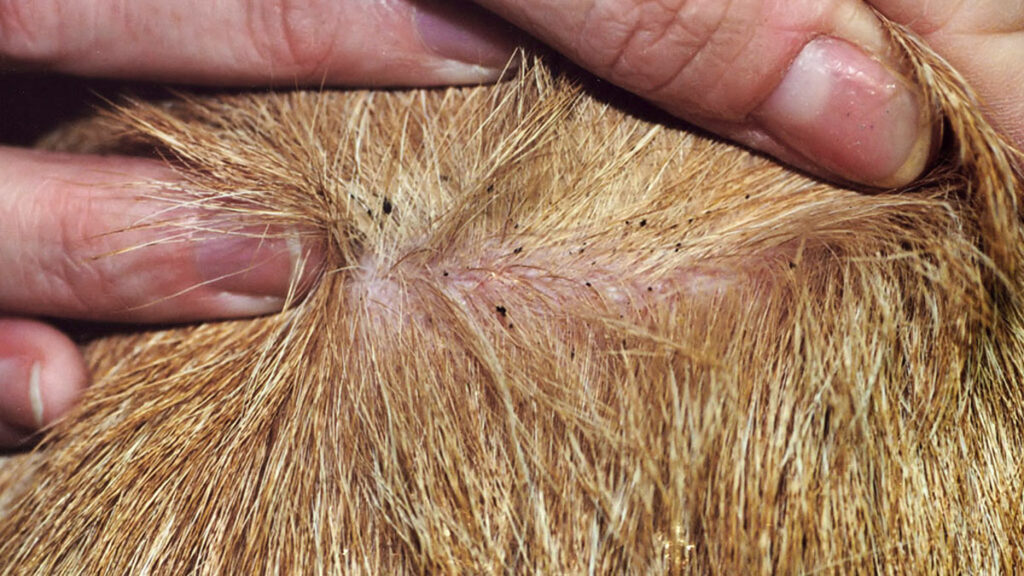Flea Dirt: Prevention Strategies For Your Home And Pets

Flea Dirt: Prevention Strategies For Your Home And Pets. Discover more detailed and exciting information on our website. Click the link below to start your adventure: Visit Best Website. Don't miss out!
Table of Contents
Flea Dirt: Prevention Strategies for Your Home and Pets
Fleas. Just the word conjures itchy skin and sleepless nights. While the tiny insects themselves are a nuisance, the telltale sign of a flea infestation – flea dirt – is often the first clue homeowners and pet owners discover. Understanding what flea dirt is, where it comes from, and how to prevent it is crucial for maintaining a clean and pest-free environment for both you and your furry friends. This comprehensive guide will equip you with the knowledge and strategies to combat flea dirt and keep those pesky parasites at bay.
What is Flea Dirt?
Flea dirt isn't dirt at all; it's actually dried flea feces. These tiny dark specks are composed primarily of digested blood. This is why, when moistened, flea dirt turns a reddish-brown color – a clear indication of an active flea infestation. Misidentifying flea dirt can lead to delayed treatment, allowing the infestation to worsen. Don't confuse flea dirt with other dark specks – understanding the telltale signs is key.
Identifying Flea Dirt:
- Color: Dark brown or black specks.
- Appearance: Tiny, granular, and easily mistaken for dirt.
- Reaction to water: Turns reddish-brown when moistened.
- Location: Commonly found on pets' fur, bedding, carpets, and upholstered furniture.
Preventing Flea Dirt: A Multi-Pronged Approach
Preventing flea dirt begins with a proactive approach to flea control. This involves a combination of preventative measures for your pets and thorough cleaning of your home environment. Ignoring one aspect leaves your efforts incomplete and increases the chances of a full-blown infestation.
Pet-Focused Prevention:
- Regular Flea Treatments: Consult your veterinarian about the best flea preventative medication for your pet's breed, age, and health. Options range from topical treatments to oral medications. Remember to follow the veterinarian's instructions precisely.
- Flea Combs: Regularly comb your pet's fur with a fine-toothed flea comb. This helps remove adult fleas and flea dirt, minimizing the spread of the infestation. Dispose of collected fleas and flea dirt immediately.
- Grooming: Regular grooming helps remove loose fur, dirt, and potential flea eggs. This reduces the likelihood of a flea infestation taking hold.
- Yard Maintenance: Keep your yard well-maintained by mowing the grass regularly and removing debris where fleas might thrive.
Home-Focused Prevention:
- Deep Cleaning: Vacuum carpets, rugs, upholstery, and pet bedding frequently. Empty the vacuum cleaner bag immediately outside to prevent re-infestation.
- Washing: Wash pet bedding, blankets, and other washable items in hot water (at least 130°F) to kill fleas and their eggs.
- Steam Cleaning: Consider steam cleaning carpets and upholstery for a deeper clean that eliminates fleas and flea dirt.
- Professional Pest Control: For severe infestations or persistent problems, contacting a professional pest control service is advisable. They have specialized tools and treatments to eliminate fleas effectively.
Dealing with a Flea Dirt Infestation:
If you've already discovered flea dirt, immediate action is crucial. Don't delay – a swift response can prevent a larger infestation and minimize the discomfort for you and your pet. Remember, consistent preventative measures are your best defense against flea dirt and the unwanted guests that accompany it.
Need help identifying flea dirt or developing a tailored prevention plan? Contact your veterinarian or a pest control professional today!

Thank you for visiting our website wich cover about Flea Dirt: Prevention Strategies For Your Home And Pets. We hope the information provided has been useful to you. Feel free to contact us if you have any questions or need further assistance. See you next time and dont miss to bookmark.
Featured Posts
-
 Liverpool Loanee Jayden Danns Injury Update Whats Next For Sunderland
Feb 05, 2025
Liverpool Loanee Jayden Danns Injury Update Whats Next For Sunderland
Feb 05, 2025 -
 Is U Conn Football Joining A Power Five Conference Latest Updates
Feb 05, 2025
Is U Conn Football Joining A Power Five Conference Latest Updates
Feb 05, 2025 -
 Impact Des Taxes Sur Le Marche Asiatique Du Fentanyl Bilan Mitige
Feb 05, 2025
Impact Des Taxes Sur Le Marche Asiatique Du Fentanyl Bilan Mitige
Feb 05, 2025 -
 Professional Headshots For Experienced Italian Lawyers A Guide
Feb 05, 2025
Professional Headshots For Experienced Italian Lawyers A Guide
Feb 05, 2025 -
 La Wildfires Fuel Betting Surge A Troubling Trend
Feb 05, 2025
La Wildfires Fuel Betting Surge A Troubling Trend
Feb 05, 2025
